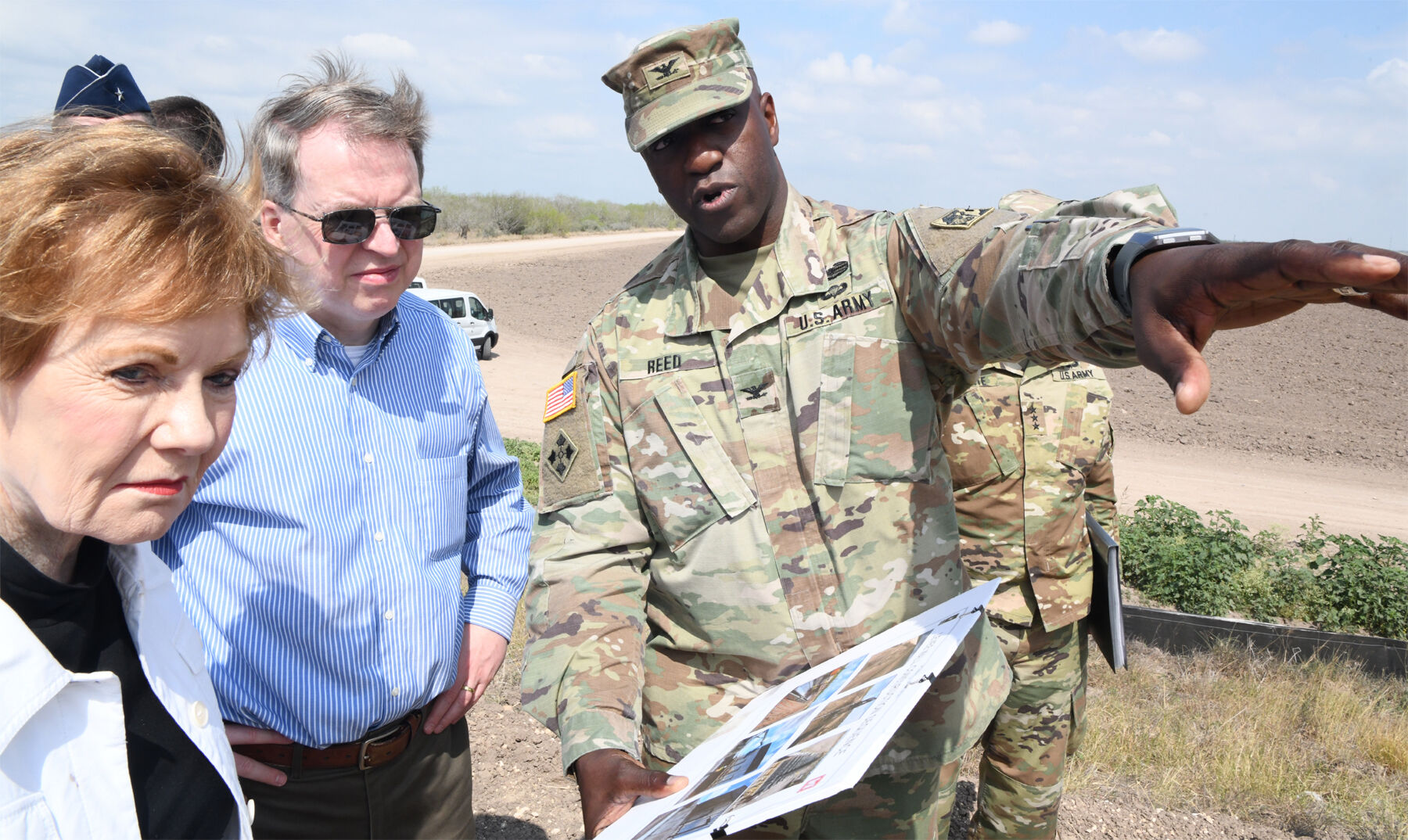
Iran has dramatically increased its stockpile of uranium, possibly speeding up its timeline for developing a nuclear weapon, the International Atomic Energy Agency (IAEA) revealed Tuesday. Less than 24 hours before, North Korean missiles whistled across the sky on the Korean Peninsula, in defiance of a U.N. Security Council resolution prohibiting them.
Those are just two of the global headaches the Pentagon finds itself in the middle of as it wrestles with efforts to modernize old business systems.
Sitting at the head of a long table with 12 chairs — which are often occupied by high-ranking men and women in uniform — partially surrounded by military maps on three walls, Deputy Defense Secretary David Norquist greets this reporter with a fist bump instead of a handshake.
It’s a tacit acknowledgment of the global spread of the coronavirus — another emerging headache.
COVID-19, as the disease caused by the virus is called, is dangerously close to a global pandemic and is threatening U.S. forces in several countries — adding to the many other serious threats they face.
On any given day, according to U.S. military documents, American forces are stationed and deployed across 160 countries in varying numbers, from hundreds in some countries to tens of thousands in others.
They are engaged in critical missions, including conventional warfare, foreign internal defense, special reconnaissance, direct action, counterterrorism and training exercises, to name a few.
But unpredictable developments, such as COVID-19, and natural and man-made disasters that can pop up, at a moment’s notice anywhere in the world, are increasingly complicating DOD’s mission.
“The biggest challenge, I think, is the constant tension between readiness for today — the deployment of troops today, the training, the maintenance — and readiness for the challenges in the fight of the future,” said Norquist in an exclusive interview with WTOP.
A long war in Afghanistan, U.S. military operations in an unstable Syria, Russia’s international bullying and China’s unbridled lust for global supremacy, dominate the Pentagon leadership’s time. But terrorist flare-ups and other pop-up problems du jour are crammed into Norquist’s 11-hour days, as well.
‘Up and out’ and ‘Down and in’
Norquist and his boss, Defense Secretary Mark Esper, split the workload of running the Department of Defense into what they call “the up and out” and “the down and in.”
According to Norquist, Esper deals with, “the up and out, which is focused on foreign policy, interaction with foreign countries and current operations.”
Norquist said his job is to handle, “the down and in — the chief operating officer type of function,” which he described as managing the building, the process, the budget and other reforms.
But Norquist said he’s hampered by an important problem.
“Very old business systems, old software, old technology, not necessarily designed to talk to each other. Unlike some of our cutting-edge weapon systems, our back-office business systems do not reflect the modern approaches that U.S. companies have,” Norquist said bluntly.
Running the day-to-day operations of a $705 billion global enterprise and not having access to the accurate real-time disposition of its assets is problematic for Norquist and his team.
The most difficult aspect, he said, is “the ability to have a clear understanding of your inventory — where it is and make sure that it’s at the right level of turnover and activity — those are the places that are hardest.”
More specifically, Norquist said, “one of the things we found is places where people have bought inventory, put it on the shelf and never entered it into the logistics system. Other people needed that spare part but didn’t see it is available. But if they had put it in the system, it would have been [available].”
Contracting is another trouble spot.
“Our contracting processes take a long time. We are very large and complex operation and so when you try and change one piece, the number of other systems you are touching is much larger,” Norquist said.
Asked what’s being done to fix the “back office” problems, Norquist replied, “we’re getting there, but it is too slow. You can change it. It just takes constant steady drive. It’s hard sometimes in Washington, with the topics in the news changing from day to day, to remember: Stay on this; keep moving it; it will make a difference as we do it.”
Preparing to take on tomorrow
Watching Norquist take a sip of coffee, it’s hard not to notice the wide, heavy, wooden desk looming behind him. On the desk sit multiple, deliberately emptied inboxes, each with a bright red and white label inside that reads “Top Secret.”
Behind the desk, next to the back wall, is a table with three, dark computer monitors.
It’s not hard to imagine the inboxes overfilled and the computer monitors flickering with highly classified details, as the Pentagon brass decides how to face the problems of the future.
Some of them, if recent aggressive behavior by Russia’s military is any indicator, will undoubtedly take place in space. U.S. military officials have noted that Russian satellites have been stalking U.S. satellites, creating tension and a possible future confrontation.
Situations like that are why the new Space Force is important.
“When you look ahead to the future, you realize we’re not just going to be fighting an air, land and sea, like we did in World War II, but in space and cyberspace,” he said. “All the main operations we talk about in those two areas will see continued growth because that’s where the threat is going and that’s where the capabilities and the opportunities are.”
To that end, Norquist said DOD is engaged in three areas of effort: “Restoring readiness and modernizing our capabilities for a more lethal force. Strengthen alliances and attracting new partners. And the third key one is reforming the department for greater performance accountability and affordability.”
You can listen to the entire interview with Deputy Defense Secretary David Norquist on episode 214 of the Target USA podcast.








